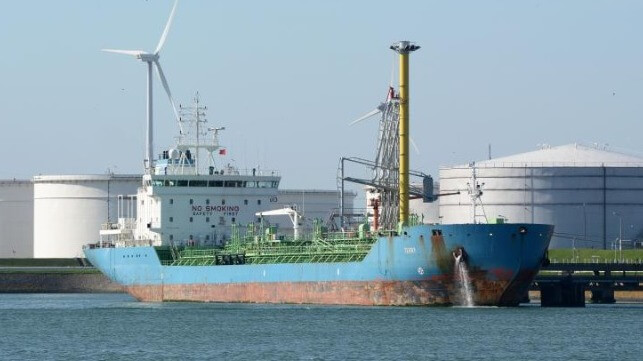Dark Fleet Bunkering Highlights Sanctions System's Weakness

The activities of two oilers which regularly refuel Russian dark fleet tankers in the Baltic are showing the imperfections and weaknesses of sanctions as a foreign policy tool.
Two bunker tankers, the Rina (9835 GT, IMO 9152820) and Zircone (5045 GT, IMO 9010929), have been operating for years in the Baltic, and in particular in the Danish Straits, a sea channel through which about 200 vessels pass daily. They operate primarily from the ports of Riga in Latvia, and Klaip?da and Paldiski in Estonia. The two bunker tankers formed part of a fleet of seven vessels, which being efficient and effective, have established a strong position for their owners in the highly competitive bunkering market.
The Rina and Zircone still ply their trade, much as they have always done. Their pattern of activity has changed little over the last 10 years, notwithstanding the increasing isolation of Russia post its invasion of Ukraine in 2022.
A large percentage of the Rina and Zircone's customers at sea remain Russian-owned tankers on their way to and from the Russian oil export terminals at Primorsk and Ust-Luga. The difference since the invasion of Ukraine is that most of these tankers are now members of Russian-controlled dark fleet, sailing under fast-changing flags of convenience and switching names frequently.
In 2025, the Rina was seen on March 11 bunkering the tanker Blue (IMO 9236353), then flying the flag of Antigua & Barbuda and apparently Turkish-owned. On October 30, Blue was bunkered by Zircone off Gotland.
In 2024, the tanker Rainbow (IMO 9302126), and also then flying the flag of Antigua & Barbuda, was refueled by Zircone off Gotland on August 17, and when plying between Primorsk and Libya was refueled by Rina on December 14.
Neither the Blue or the Rainbow were sanctioned when they were bunkered on these occasions. But like many other customers, they were sanctioned later, and their well-advertised series of visits to Primorsk and Ust-Luga should have raised compliance red flags.
An investigation found that between June 2024 and March 2025, Rina and Zircone bunkered 286 ships. Of these, more than 160 were tankers which had called at Primorsk and Ust-Luga either before or after the bunkering rendezvous.
Since the operations of the Rina and Zircone began to attract publicity, their ownership has changed and has finally settled on a company registered in Dubai, namely FB Trade DWC-LLC (Commercial Registration 11119), though they are still operating in the Baltic. FB Trade is now also believed to be operating the 10,321 GT tanker Onyx 2 (IMO 9169782, flagged in the Comoros Islands). Onyx 2 appears to be conducting bunkering operations in the Gulf of Oman out of Khor Fakkan, off which there is a thriving STS transshipment hub frequented by both Russian and Iranian dark fleet tankers.
This saga illustrates the inherent weakness of the sanctions system: Estonia and Latvia are amongst the most active nations seeking to curb Russian aggression, but have not been able to curtail activities based in their ports which should perhaps have raised red flags. Nor have Denmark or Sweden, also closely committed to increasing pressure on Russia, been able to clamp down on dark fleet-associated activities in their home waters. In the Gulf, countries bordering what used to be called the Pirate Coast are in general disinclined to intervene.
Top image: Product tanker Onyx 2 (VesselFinder / Cornelis Dijkshoorn)
The opinions expressed herein are the author's and not necessarily those of The Maritime Executive.
